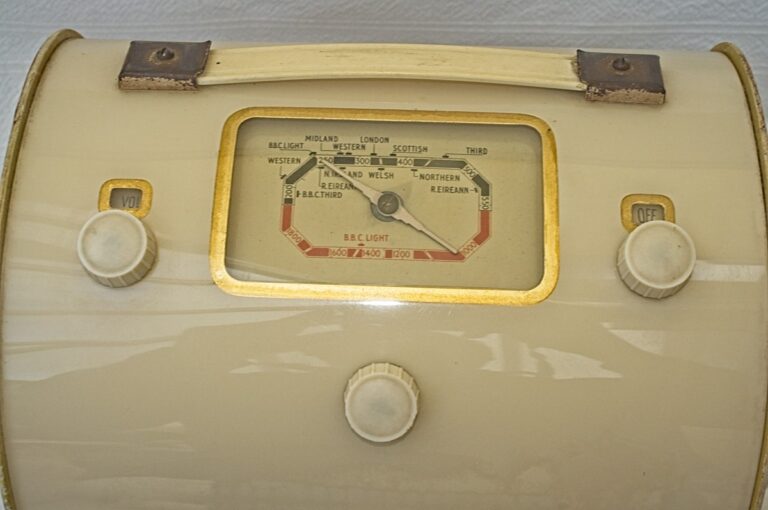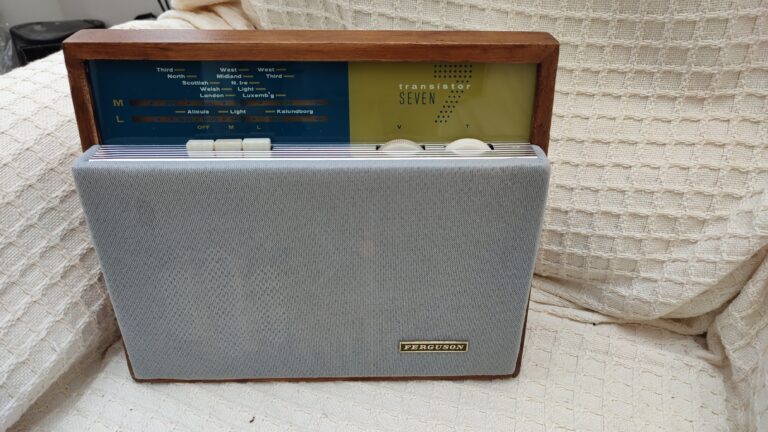Attractive two band transistor radio from 1960 the HMV 1420
The HMV 1420 model transistor radio which is described in this article was made in about 1960 and is one of the earliest designs HMV made that uses transistors rather than valves.
My HMV 1420 transistor radio
I bought this radio set from eBay as another model to practice my repair and refurbishment skills on, and also because I thought it was quite an attractive design. I paid about £12 for it and for that received a set in pretty reasonable condition.
The covering is made of a fabric type material that looks like it should clean up well, and the side mounted volume and tuning knobs seem to turn without any obstruction or hindrance.
Internally I found that the set needs a bit of work because the cord that connects the tuning control has come adrift and needs to be reconnected to the pointer on the tuning scale. Hopefully I can work out how that is connected.
The other issue which I can see needs to be repaired is the internal aerial which is fixed to L brackets on the top of the cabinet. At some time the ferrite rod that the aerial coils are wound around has broken in two places, so I’ll need to see if that can be glued back together.
There is also a touch of rust on the steel plate behind the tuning scale, but that shouldn’t really effect the radio operation in any way.
I haven’t connected power to the radio yet because I don’t have batteries, but I can see from a diagram on the back of the set that it takes two Ever Ready PP1 batteries, which seem to be 6v with stud terminals. It’s probably going to be expensive to buy original style replacement batteries, so I may buy some AA battery holders that take 4 batteries and fix them to the bottom of the case, so modern AA batteries can be used instead.
Pictures of the HMV 1420 Transistor radio
The gallery below shows some pictures of the HMV 1420 and it’s general construction technique
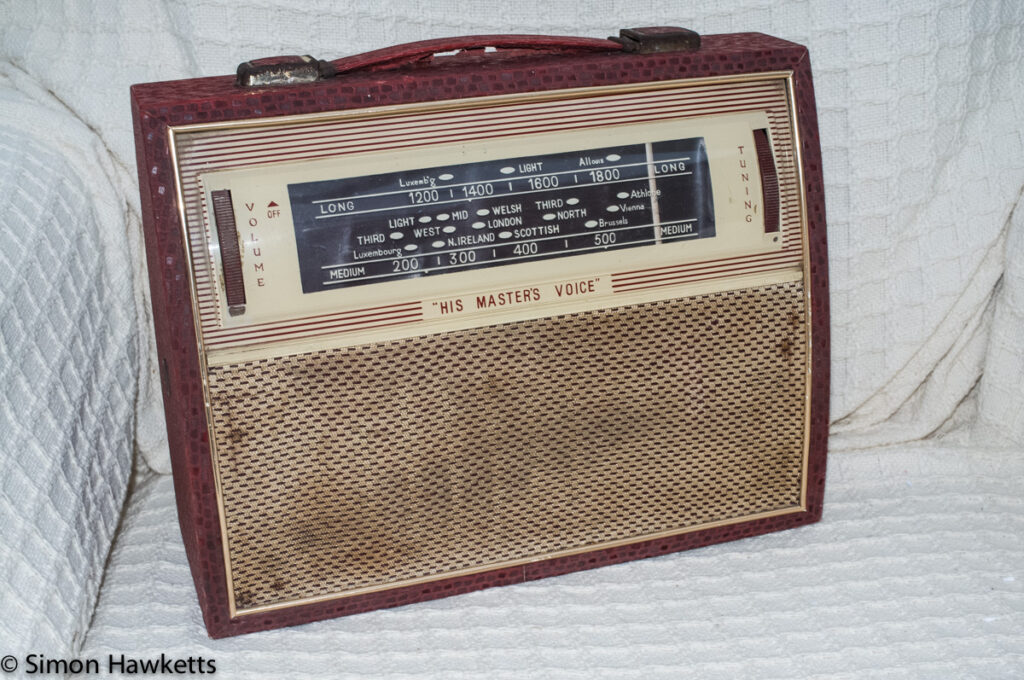


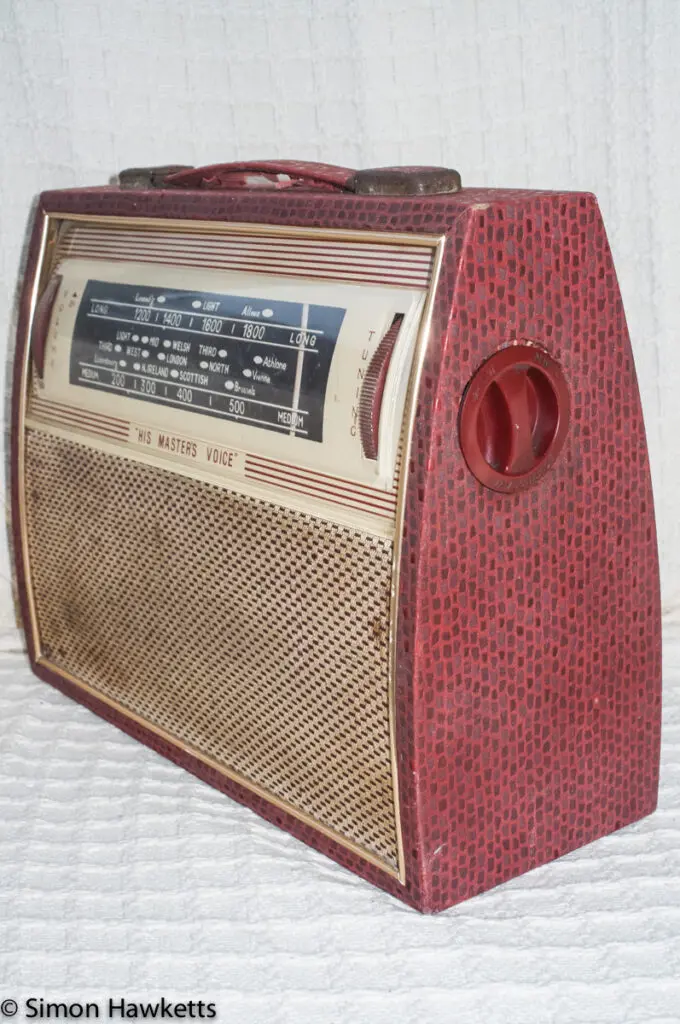
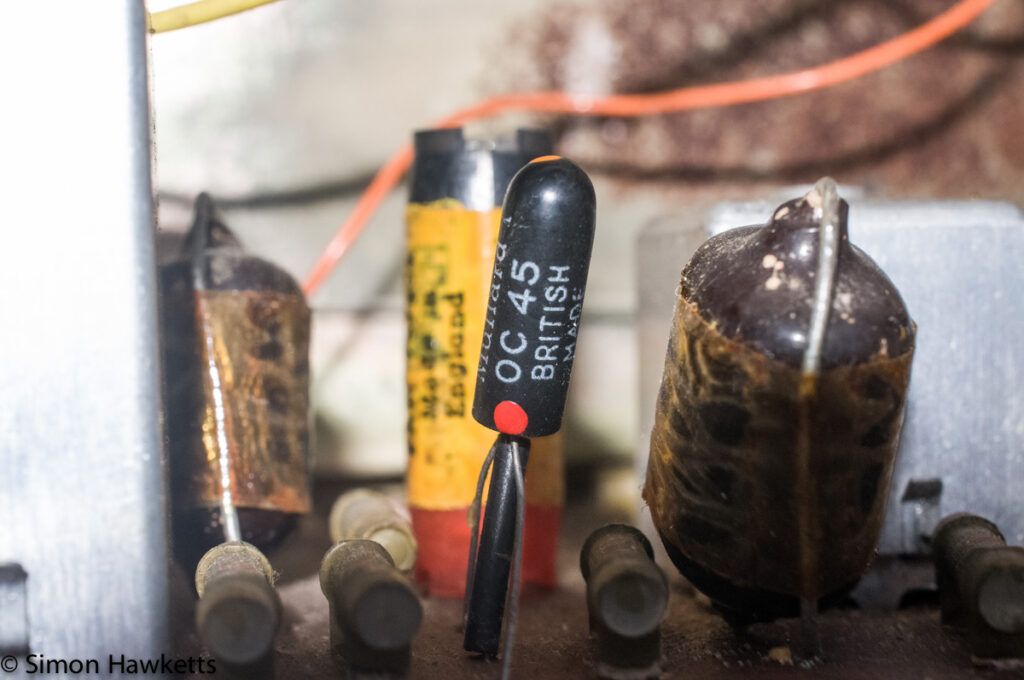

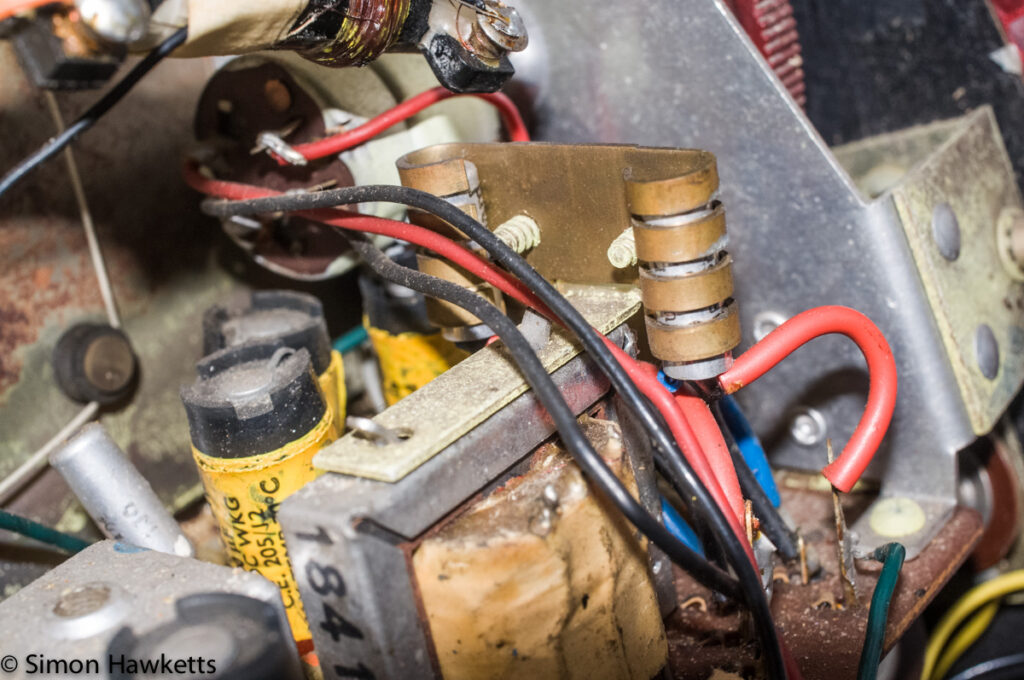

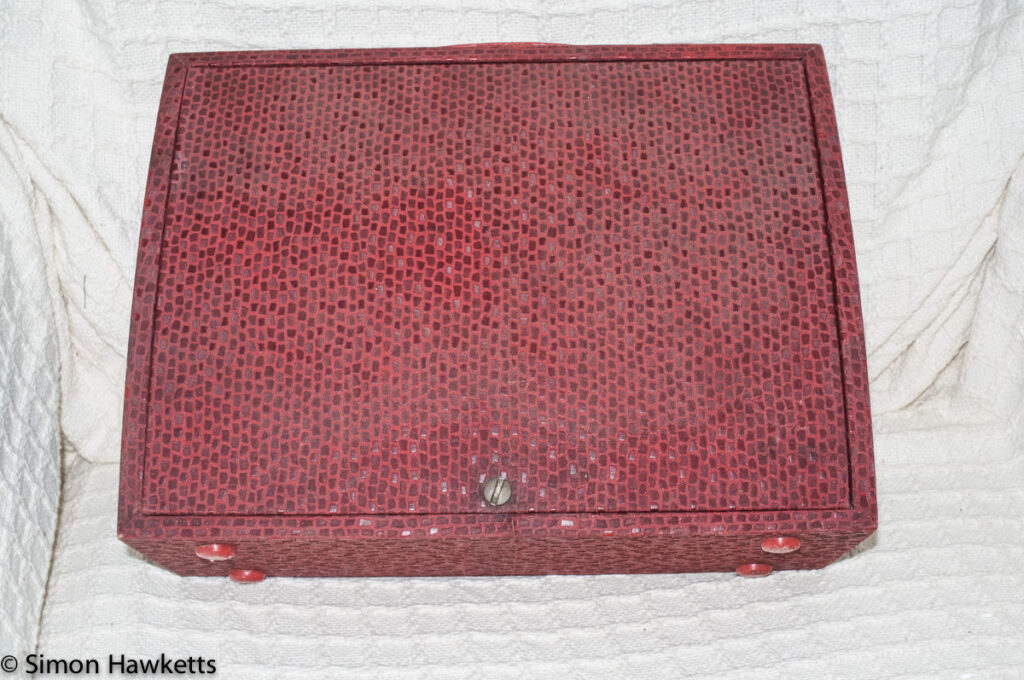

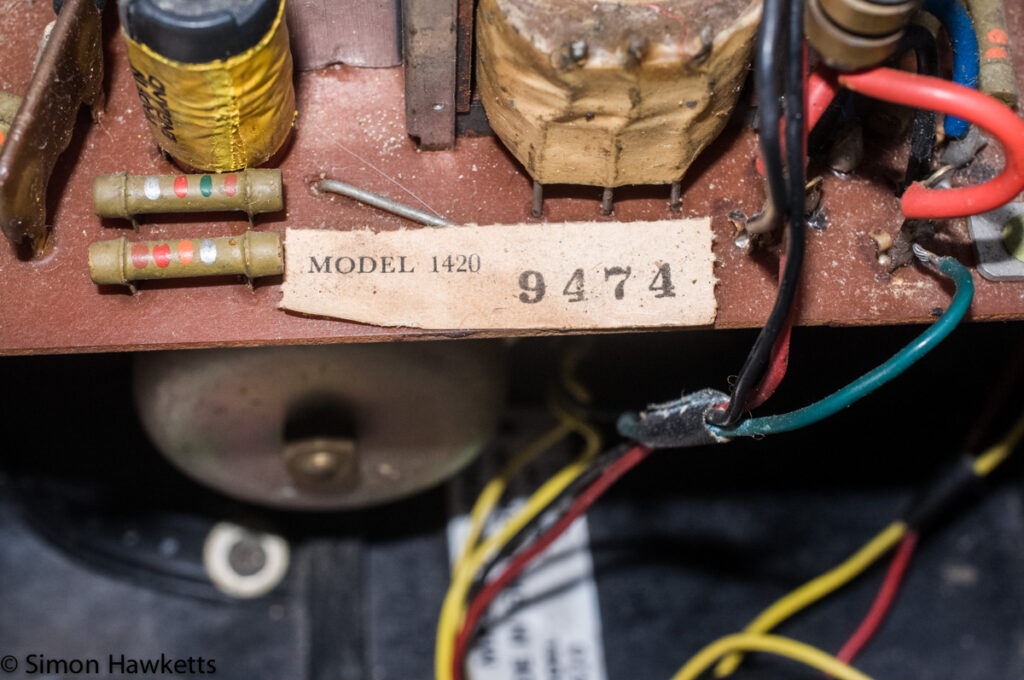

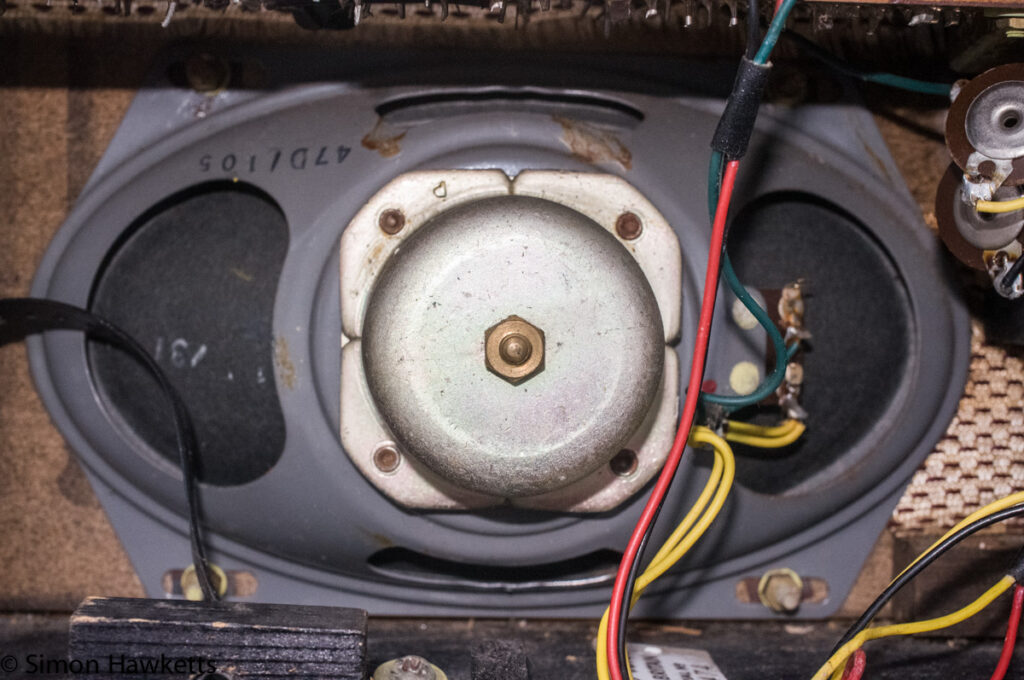
HMV 1420 Transistor radio Description
It probably doesn’t need saying, but the HMV manufacturer is also known as His Masters Voice, which is a very well known name in the history of audio recording and electronics.
Although the HMV 1420 can be said to be portable because it has a handle fixed to the top, it also has a reasonable sized speaker, and the upright design makes it very usable as a desktop model as well.
I think this is a very attractive design. There is a nice big tuning scale at the front of the set with volume and tuning controls at each end. Underneath the tuning scale is a covered panel with the speaker behind, and there is an external aerial socket on one side and the MW/LW waveband switch on the other side.

There don’t appear to be lights behind the tuning scale, probably because of the extra current drain that would place on the batteries, but that’s a shame since the scale would light up nicely. Perhaps I should add a couple of LEDs when I get the set working!
The design is a straight forward 6 stage superhet model which uses the OC series of transistors. The construction methods used would seem to make it really easy to work on, because there is a large PCB with all the electronics fixed across the middle of the unit, making it easy to get to any component and make measurements or replacement of components simple.
It also looks as if the internal electronics can also be easily removed from the wooden cabinet, because there just seem to be two screws on the side and a couple of brackets on the top that are holding the chassis into the cabinet.
HMV 1420 Radio Specifications
- HMV 1420 Transistor Radio receiver
- Made about 1960 by HMV in England
- Six transistor superhet design with OC series transistors
- Covers MW and LW wavebands
- Takes two 6V Batteries type PP1
- External aerial socket
HMV 1420 Service information
The HMV 1420 service information is covered in the 1961/1962 edition of the Radio & TV servicing book that is the ‘bible’ for vintage radio data in the UK. It’s on page 138, and I’ve made a copy of the pages to include in this article. I don’t believe this is a serious breach of copyright, because the information is now very old and only relevant to hobbyists interested in repair or maintenance of this model, but if anyone believes they have a valid claim on the copyright, I will of course remove this section from the article.


Discover more from Everything Vintage
Subscribe to get the latest posts sent to your email.


